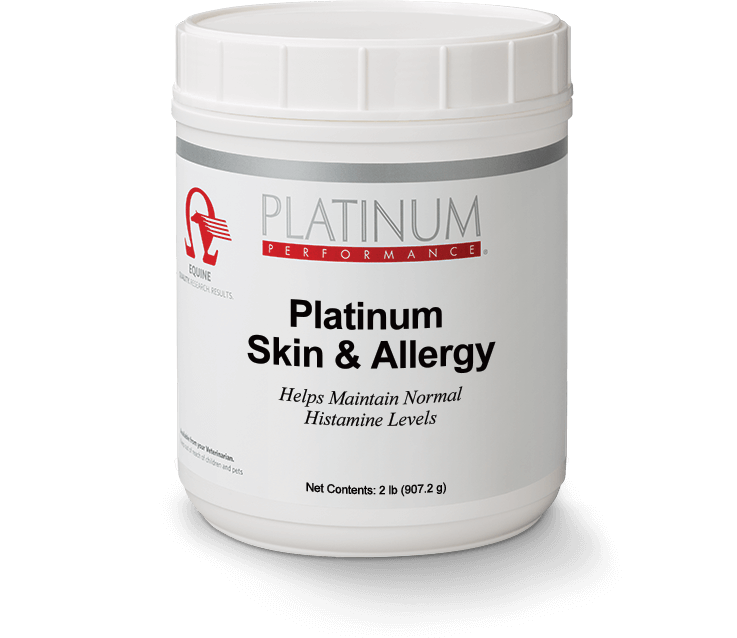With No Quick Solution, Allergy Testing Can Be Helpful in Narrowing The Search for a Seasonal Allergen While The Process of Elimination Can Really Offer A More Definitive Diagnosis
Few things are more frustrating for horse owners than walking out to the barn on a beautiful summer day ready to ride, only to find their horse’s skin covered in hives. This skin reaction is just one form of seasonal allergies that hinders horses everywhere — just like their human riders. Other seasonal allergy symptoms include watery eyes, runny nose, itching and hair loss. These physical attributes are easy to spot, but the root cause is sometimes hard to identify, leaving riders and veterinarians discouraged and unable to provide relief.
A seasonal allergy is an immune condition characterized by hypersensitivity to an allergen. The most common sources are insect bites, molds, spores and certain proteins in pasture grasses. These can trigger an excessive immune response to a substance. Ideally, the reaction and the horse’s immune response are in balance maintaining the horse in homeostasis — a healthy state. When an allergic reaction is larger than the response, the horse reaches its allergy threshold — an uncontrollable state where physical symptoms start to appear.
seasonal allergy
an immune condition characterized by hypersensitivity to an allergen.
The most common sources are insect bites, molds, spores and certain proteins in pasture grasses.
Start supplementing your horse at least 4-6 weeks prior to when your horse typically starts to show signs of seasonal allergies to help provide support for a healthy skin and coat.
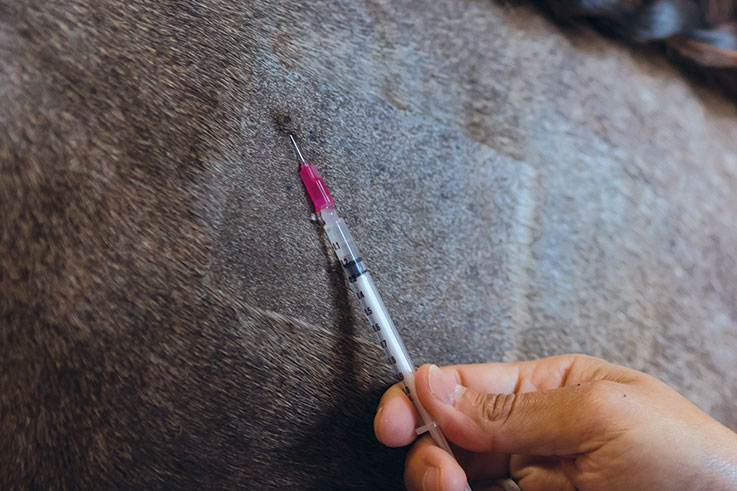
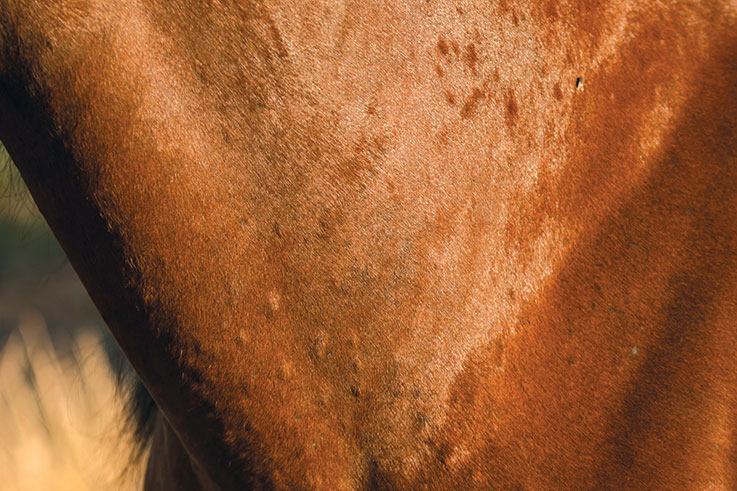
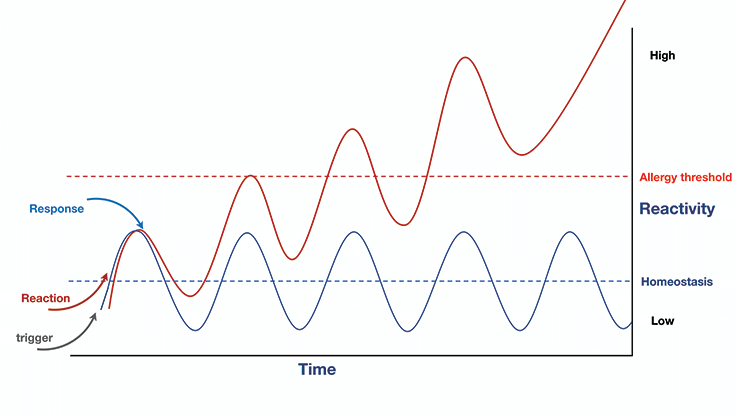
Over The Allergy Threshold
This graph shows how a seasonal allergy can be blown out of proportion. The blue line represents how a horse’s body should respond to an allergen; while the red line depicts how an allergic horse’s body overreacts to the same substance. Each rise in the line represents the immune system’s response to the allergen. In the normal horse, the reaction and the response (shown as the downside of the curve) are in balance maintaining the horse in homeostasis — a healthy state. In the allergic animal, the reaction is larger than the response, causing the curve to start climbing until the horse reaches its allergy threshold, an uncontrollable state where physical symptoms start to appear.
Types of Equine Allergies
Allergic reactions can be grouped into three categories: seasonal skin and insect bite hypersensitivity (IBH); asthma; and feed allergies.
Skin and bug allergies are by far the most common, which is why allergies tend to show up seasonally, when new grasses and insects are abundant. Seasonal skin allergies can be caused by virtually anything a horse comes in contact with, from pollen, grass and mold to shampoo and fly spray — even a new blanket. Usually, if there is a reaction to a man-made product, it is because the product contains a plant-based extract that is the trigger. An insect bite exposes the horse to saliva proteins from the bug that sparks the immune response. Because the salivary proteins are similar across many insect (and arachnid) types, a horse responding to one bug may end up having reactions to all sorts of different ones.
Equine asthma is a new term for what was formerly diagnosed as heaves or recurrent airway obstruction. This condition is caused by hypersensitivity in the lungs to airborne dust and mold, which results in a runny nose, coughing and difficulty breathing. In racehorses, the presence of asthma can also increase the risk of exercise- induced pulmonary hemorrhage, also known as bleeding, that can affect race times and performance.
The third type of allergic reaction is to feed. While developing a reaction to an ingested feed is the most uncommon of all allergies in horses, it tends to bring up the most conversation since it is easily controlled by owners. Like other allergy types, this reaction is brought on by proteins in the feed. This means that if only the fat content of a particular feed is ingested, the horse’s body will not respond.
Types of Allergic Reactions
Skin & Insect Bite Hypersensitivity
Asthma
Feed Allergies
Allergy Tests
Determining the cause of an allergy can be very tricky because no single test can provide conclusive answers. However, they can act as helpful tools to steer us toward the suspected allergen. In fact, many dermatologists feel that the best use of allergy testing is to help guide allergen-specific immune therapy, which has been proven effective in many cases. This treatment calls for allergenic substances to be administered to patients in gradually increasing amounts to lessen hypersensitivity. The hope is that slowly introducing the allergen can prove to the body that it is not a threat and there is no need for a hyperactive response.
There are two types of antigen tests most commonly used to help identify what is causing an allergy. The first is the serum allergy test, a simple blood draw taken by a veterinarian. This specimen is sent to a laboratory where the levels of IgE specific to the various antigens (or allergens) are measured. IgE is an antibody produced by the immune system in response to an allergen. Elevated levels of IgE correspond with a positive allergy. Unfortunately, false-positive results are common, meaning the test may show a positive allergen when the horse is not really allergic to the substance. This can occur for a couple of reasons. First, just because the body produces more IgE in response to an allergen doesn’t necessarily mean the horse is allergic to it; the presence of IgE antibodies means that the animal has come into contact with the substance before and its immune system recognizes it. In other words, high IgE levels correlate with a positive exposure but not necessarily an allergic reaction. Due to this fact, the higher levels of IgE present in the blood do not correlate with the level of reactivity. One substance may score higher on the test only because the body recognizes that allergen easier than another that is actually causing the reaction. Although not completely accurate, the good news is these tests are a simple and convenient way to start the journey of discovery of what the horse is allergic to.
The second, generally more accurate, type of allergy test is called an intradermal skin test, which is also performed by a veterinarian. It requires a portion of the skin to be shaved, usually the neck, suspected allergens are injected into the site to show reactivity. A best practice is to use the results from the serum allergy test to choose which allergens to test on the horse’s skin. Because this test evaluates skin reactivity, the horse must be taken off all allergy medications at least two weeks prior to the testing. The idea behind the test is that larger wheal sizes, or degree of swelling, correlates with positive allergens. Unfortunately, this is not always conclusive; as with serum allergy testing, the same test given to the same horse at different times can turn up different results.
Because allergy tests are generally performed after a horse has had an allergic reaction, there is a high risk of inaccuracy. During this time, the horse is in a heightened immune state that increases the likelihood of more reactive triggers to substances that may not cause any issues when the horse is in homeostasis. The body is basically on guard and sensitive to keep any foreign substance away, whether it is harmful or not. For this reason, the results should be used as a guide for potential causes and not taken as an absolute diagnosis. It is best to work with a veterinarian to examine the findings and compare to each individual horse, its environment and the severity of the reaction.
Two Common Types of Antigen Tests
-
Serum Allergy Test
A simple blood draw taken by a veterinarian. This specimen is sent to a laboratory where the levels of IgE specific to the various antigens (or allergens) are measured. Immunoglobulin E (IgE) is an antibody produced by the immune system in response to an allergen. Elevated levels of IgE correspond with a positive allergy. -
Intradermal Skin Test
It requires a portion of the skin to be shaved, usually the neck, where suspected allergens are injected into the site to show reactivity.
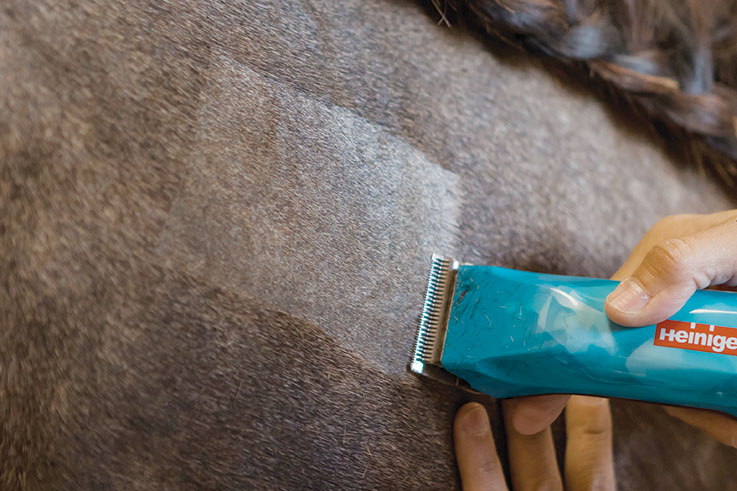
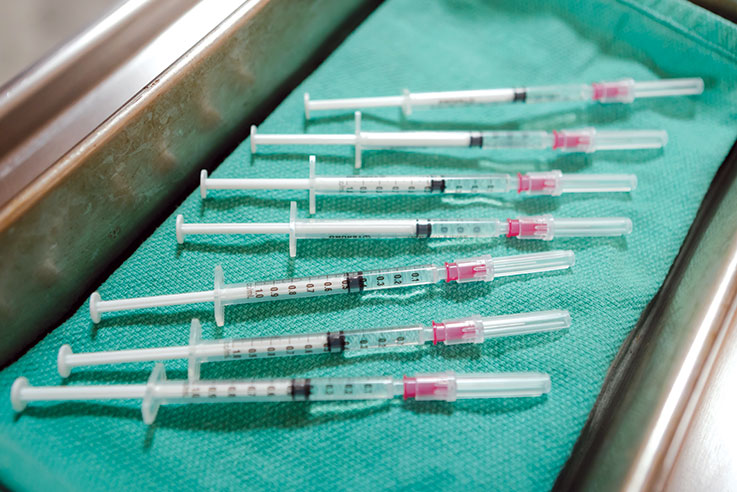
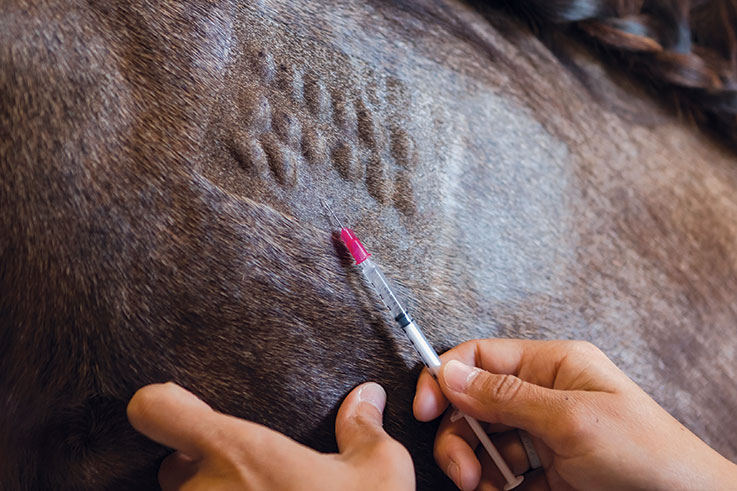
Because allergy tests are generally performed after a horse has had an allergic reaction, there is a high risk of inaccuracy. The horse is in a heightened immune state that increases the likelihood of more reactive triggers to substances that may not cause any issues when the horse is in homeostasis. Results should be used as a guide for potential causes and not taken as an absolute diagnosis.
Diagnosis
The presence of asthma can be confirmed by performing a bronchoalveolar lavage (BAL), a simple and safe method to collect samples from the lungs for evaluation of the type and number of immune cells present in the lower airways. As with skin allergies, the specific trigger is not always easily determined.
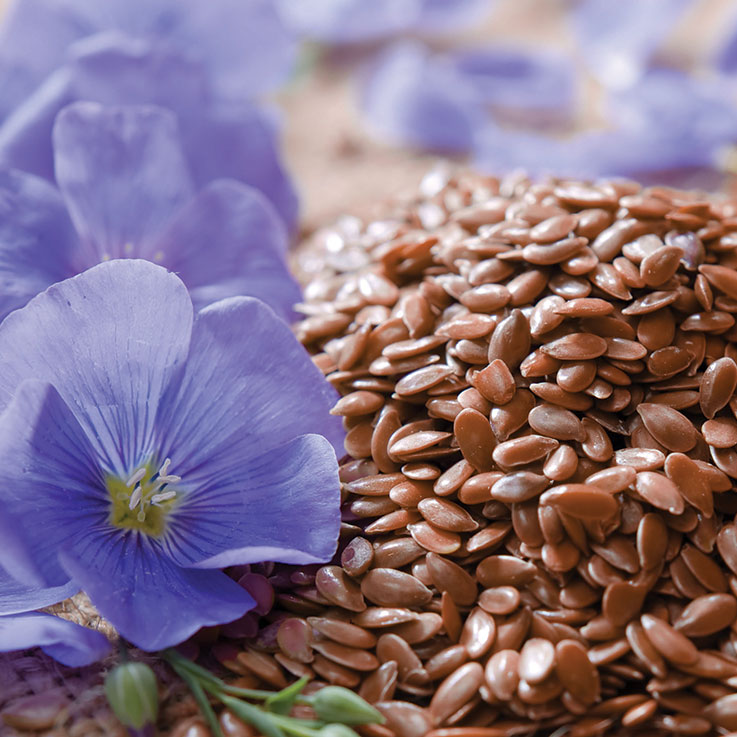
Beware: False-Positive Results with Flaxseed
Containing a high level of omega-3 fatty acids, flaxseed is a popular recommendation for horses with seasonal allergies to support a healthy skin and coat. Unfortunately, it is becoming more common to see flaxseed pop up as a positive allergy on the serum test. As a reminder, false-positive results are common and caused by a positive exposure but not a positive reaction.
The only way to determine if a horse is allergic to flaxseed is to eliminate it from the diet for at least two weeks, then re-introduce it. If the horse elicits a response upon reintroduction, the diagnosis is clear.
For horses that are truly allergic to flaxseed, it is important to support their immune health by providing omega-3 fatty acids from other sources. One easy option is flaxseed oil. Although it is flaxseed-based, horses with a flax allergy can consume it because the oil contains no protein, and allergies are only triggered by the proteins in substances.
Did You Know?
False-positive results in serum tests are common and caused by a positive exposure but not a positive reaction.
The Process of Elimination
Try eliminating each of these common allergens to see if the horse can return to a state of homeostasis. It is important to try each one for at least two weeks to see if there are improvements in the horse’s condition.
- Anything New: If something new has been introduced, like a shampoo or fly spray, that should be the first thing to consider eliminating in response to a skin allergy. It’s also important to assess any changes to the horse’s environment like a new stall or pasture turnout.
- Insects: Although it is impossible to fully eliminate insects, they can be minimized by washing the animal regularly, cleaning horse pens daily, using fly masks, sheets and sprays and adjusting turnouts to after dark when bugs aren’t flying as much. It is also important to minimize exposure to standing water, like ponds, since these can also be breeding grounds for insects.
- Pollen and Dust: Environmental allergies are also tough to combat, but there are preventative measures that can help reduce these airborne triggers. Watering down high traffic areas — stalls, arenas and trailers — can help with dust. Increasing ventilation by opening windows and adding fans in barns and while traveling reduces musty and dirty air that a horse breathes.
- Grass Contact: Some proteins in pasture grasses can be triggers for seasonal allergies. It is critical to identify and remove any grasses the horse has been in contact with to ensure these grasses aren’t causing the reaction.
- Mold: Eliminate any exposure to mold by cleaning out feeders, using shavings instead of straw for bedding and removing all wet or damaged hay.
- Feed: Although feed allergies are relatively uncommon, it’s still helpful to fully eliminate the concern by simplifying the diet and removing everything but the horse’s forage content. Once the horse has been on a simple hay diet for two weeks, start reintroducing other grains and concentrates one at a time to see if the reaction returns.
“If diet is a concern of the owner (over insects or other environmental allergens), an elimination diet is a reliable approach. By systematically removing potential allergens from the diet and then even reintroducing them slowly back in, the body’s response can be observed. This will enable the horse owner to make better informed decisions about nutrition. All this said, I think RARELY are allergies in horses associated with diet and are usually insects, pollens, etc.”
— Michelle Coleman, DVM, PhD, DACVIM, University of Georgia’s College of Veterinary Medicine

Early Support is Key
The best way to support a seasonal allergy is to start supporting the body before an allergy occurs. Because a seasonal allergy is caused by an immune response, it is important to allow the body time to stabilize the immune system at least four to six weeks prior to allergy season. Nutrition is a powerful tool to support the immune system and the horse’s overall health. Omega-3 fatty acids are a great ingredient to start with to help support normal healthy levels of inflammation. Studies have shown that omega-3's can support normal healthy skin and coat in horses with seasonal allergies.
Next, it is important to support digestion and the microbiome with L-glutamine, prebiotics and probiotics. Since at least 70% of the immune system resides in the gut, supporting digestion is key for immune health and seasonal allergies.
Antioxidants, including vitamin E and quercetin, are also excellent additions to the diet to counteract the oxidation associated with a seasonal allergic reaction. Quercetin has even been shown to support normal histamine levels, a hormone associated with triggering seasonal allergies.
It is important to work with a veterinarian throughout a horse’s allergy journey. It can be a very bumpy road with few answers and many twists and turns. The secret is not giving up but continuing to try new and alternative approaches to support the horse’s immune system and remove possible triggers.
Advanced Allergy Support During Seasonal Outbreaks
Platinum Skin & Allergy is a unique formula for horses experiencing seasonal skin or respiratory allergies.
This potent formula helps maintain a healthy immune system and provides ingredients to support normal histamine levels. Starting your horse on targeted nutrients prior to allergy season can be one of the best defenses.
Seasonal allergens may include grasses, molds, spores or insect bites. Signs your horse may have an allergic response include watery eyes, hives, itching or hair loss.
For the best results, use in conjunction with one of our Platinum Performance® wellness formulas.
Start 4-6 Weeks Prior to Allergy Season!
-
 Support for Inflammation - Helps maintain normal, healthy levels of inflammation in the body
Support for Inflammation - Helps maintain normal, healthy levels of inflammation in the body
-
 Immune Health - Supports immune health and the body's response to seasonal allergens
Immune Health - Supports immune health and the body's response to seasonal allergens
-
 Allergic Response - Maintains healthy histamine levels, which is key in allergic response
Allergic Response - Maintains healthy histamine levels, which is key in allergic response



